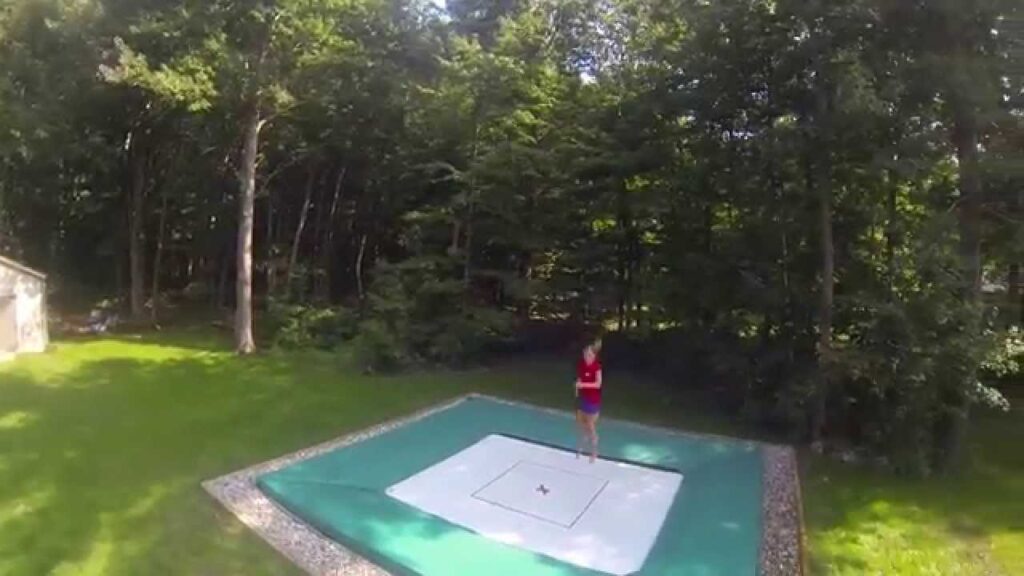Are in-ground trampolines safer?
When considering the safety of in-ground trampolines, several factors come into play. One of the main advantages is the reduced fall height. With an in-ground trampoline, the jumping surface is flush with the ground, significantly lowering the risk of injury from high falls, making it potentially safer compared to above-ground trampolines.
Benefits of In-Ground Trampolines
- Reduced Fall Height: Since the trampoline is level with the ground, there is less chance of serious injuries related to falling off the trampoline.
- Stability: In-ground trampolines are often more stable because they are securely embedded in the ground, minimizing movements that could lead to falls.
- Accessibility: Easier for children and individuals with physical disabilities to use due to the low entry point.
In-ground trampolines may also offer a more aesthetically pleasing option for homeowners. Given that the trampoline is at ground level, it tends to blend seamlessly with the garden or yard space. However, proper installation is crucial to ensure the trampoline’s safety features are effective. Incorrect installation can lead to water drainage issues and compromised trampoline stability, negating the safety benefits.
Another important aspect to consider is the use of safety nets. While the fall height is reduced, adding a safety net can further enhance the safety of in-ground trampolines by preventing jumpers from accidentally landing outside the designated jumping area.

Can you put a regular trampoline in the ground?
Many trampoline enthusiasts often wonder, “Can you put a regular trampoline in the ground?” Installing a regular trampoline in the ground can offer a sleek, aesthetically pleasing look, but it does require careful planning and some significant effort. Below, we will explore the key considerations.
Is it Feasible to Put a Regular Trampoline in the Ground?
Yes, it is feasible to put a regular trampoline in the ground, but it involves more than just digging a hole. You need to ensure proper drainage around the trampoline to avoid water accumulation. Additionally, the hole must be deep and wide enough to accommodate the trampoline frame and allow for sufficient airflow to maintain bounce quality.
Steps for Installing a Regular Trampoline In-Ground
- Digging the Hole: Ensure the hole is the correct depth and width for your trampoline model.
- Drainage: Install a proper drainage system to prevent water from collecting under the trampoline.
- Ventilation: Ensure there is sufficient airflow to maintain the trampoline’s bounce.
- Support and Stability: Use retaining walls if necessary to keep the surrounding soil from collapsing into the hole.
By following these steps, you can successfully put a regular trampoline in the ground, enhancing both safety and aesthetics in your backyard.

How to make an underground trampoline?
Creating an underground trampoline can be an exciting and rewarding project for your backyard. To start, you will need to choose a suitable location that is free of utility lines and large tree roots. Digging a hole will be the first step, and the dimensions will depend on the size of the trampoline you plan to install.
Digging and Preparing the Hole
The hole for your underground trampoline should be around 3 feet deep and slightly larger than the trampoline’s diameter to allow room for added structural support. Ensure the sides of the hole are even, and consider lining the bottom with gravel for proper drainage. Proper drainage is crucial to prevent water accumulation that could damage your trampoline.
Installing the Frame
Once the hole is prepared, the next step is to install the trampoline frame. It’s essential to securely anchor the frame to the ground to prevent any movement. You can use anchor kits available with most modern trampolines or create a custom anchoring system using concrete and bolts. This will ensure stability and safety for all users.
Securing the Mat and Springs
Attach the trampoline mat and springs according to the manufacturer’s instructions. Make sure the trampoline mat is securely fastened and free of any tears or defects before the first use. Maintain the right tension in the springs to offer optimal bounce. Regularly inspect your underground trampoline to ensure it remains in safe condition throughout its use.

William Liveman, also known as BounceBoss, is the visionary founder of Best Rebounder Trampoline. His personal journey through recovery using a rebounder has inspired the mission and vision of our blog. William is dedicated to sharing the benefits of rebounding and helping others find joy and health through this exercise. His leadership and passion drive the entire team to deliver the best content possible.



